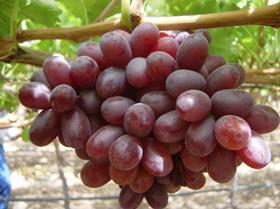
While things have changed substantially in the fruit export industry, for South African table grapes it will be business as usual when the new season starts in November.
At this very early stage, those who are prepared to speculate say they expect further growth this season compared with last year, when around 66m cartons were exported.
Table grape growers will realise that they missed much of the Covid-19 disruption in 2020 because their season ended just prior to the major lockdown of the South African economy, giving them some five months to take stock and prepare for the ‘new normal’.
The smart money is on a record or near-record export crop for South African table grapes this year.
Despite the fact that it is the industry’s stated intent to grow its markets in the east, there is no doubt that the UK and Europe, and fast growing markets such as Canada, will determine the fortunes of growers.
The UK and Europe absorbed more than 70 per cent of the South African crop last year and sales in Canada grew dramatically, albeit from a relatively small base.
At this stage it would be better to look at the radical changes taking place in the country’s cultivar offer. One thing that is expected is that red seedless will increase its dominance, with Crimson Seedless proving to be a winner.
“If in doubt, growers will continue to plant Crimson Seedless as long as the find enough good plant material – but it is also true to say that Sweet Celebration, Autumn Crisp and Sweet Globe are fast gaining ground,” says Hex grower Leon Viljoen.
Red seedless represented 48 per cent of total exports from South Africa last season, compared with 38 per cent five years ago. Black seedless varieties increased slightly during this period, but white seedless declined.
One of those who is closely involved with the development of new varieties in South Africa is Aat Hoekstra, who brought Prime Seedless to South Africa, still the second biggest variety.
During the past season he took Fruitnet into his experimental vineyards, where he argued that the firmness of new varieties is one of the major requirements for success.
As they prepare for the upcoming season, growers also know that they will need to change their cultivars very quickly in future as requirements changes. Promising varieties planted in one year, may be gone in five years’ time if they do not make the grade.
Enjoyed this free article from Eurofruit Magazine and its team of editors? Don’t miss out on even more in-depth analysis, plus all the latest news from the fresh produce business. Subscribe now to Eurofruit Magazine.



